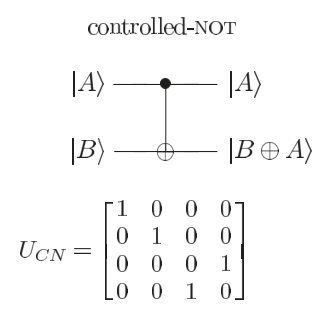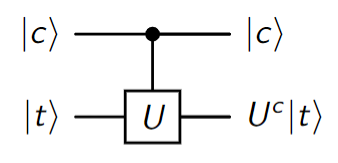Quantum gates
See also the corresponding notes for the Qubit Electronics course
NOT
The NOT gate is represented by the matrix
and acts on a state
it is easy to see that the effect of the gate is the expected one, which is to say flip the initial state.
Constraints for quantum gates
From the example above we saw that a gate acting on a single qubit can be represented by a two by two matrix. Due to the fact that the state after the application of the gate must remain normalized, the matrix must be chosen in such a way that if
It turns out that for this condition to be satisfied the matrix
Z gate
The
The effect of this gate is to leave
Hadamard gate
The Hadamard is described by
and can be thought as being the “square root of the NOT gate” in the sense that it turns
It is important to notice that
Looking at the effect of the Hadamard on the Bloch sphere this corresponds to a rotation about the
Link to original

Controlled NOT (XOR)
This gate has two input qubits, known as the control qubit and the target qubit, respectively. The circuit representation for the CNOT is shown in the image below; the top line represents the control qubit, while the bottom line represents the target qubit. The action of the gate may be described as follows. If the control qubit is set to 0, then the target qubit is left alone. If the control qubit is set to 1, then the target qubit is flipped.

The CNOT gate is particularly important because any multiple qubit logic gate may be composed from and single qubit gates.
Controlled operator C-U
Similarly to what happened for the CNOT, we can extend the concept of “control” to any other unitary operator

In computational basis, the matrix representation of the C-U operator is given by
with
No-cloning theorem
The no-cloning theorem state that it is not possible to create a copy of an unknown quantum state. This statement can be proved using the following reasoning.
Suppose we have a copying machine with two slots. The machine starts with a pure quantum state
If the copying procedure can be described by some unitary evolution
If we apply the copying procedure to two particular pure states
If we take the inner product of these two equation we get
Since
Even though this proof holds only for unitary operators, it can be shown that the results remain valid for the general case as well.
